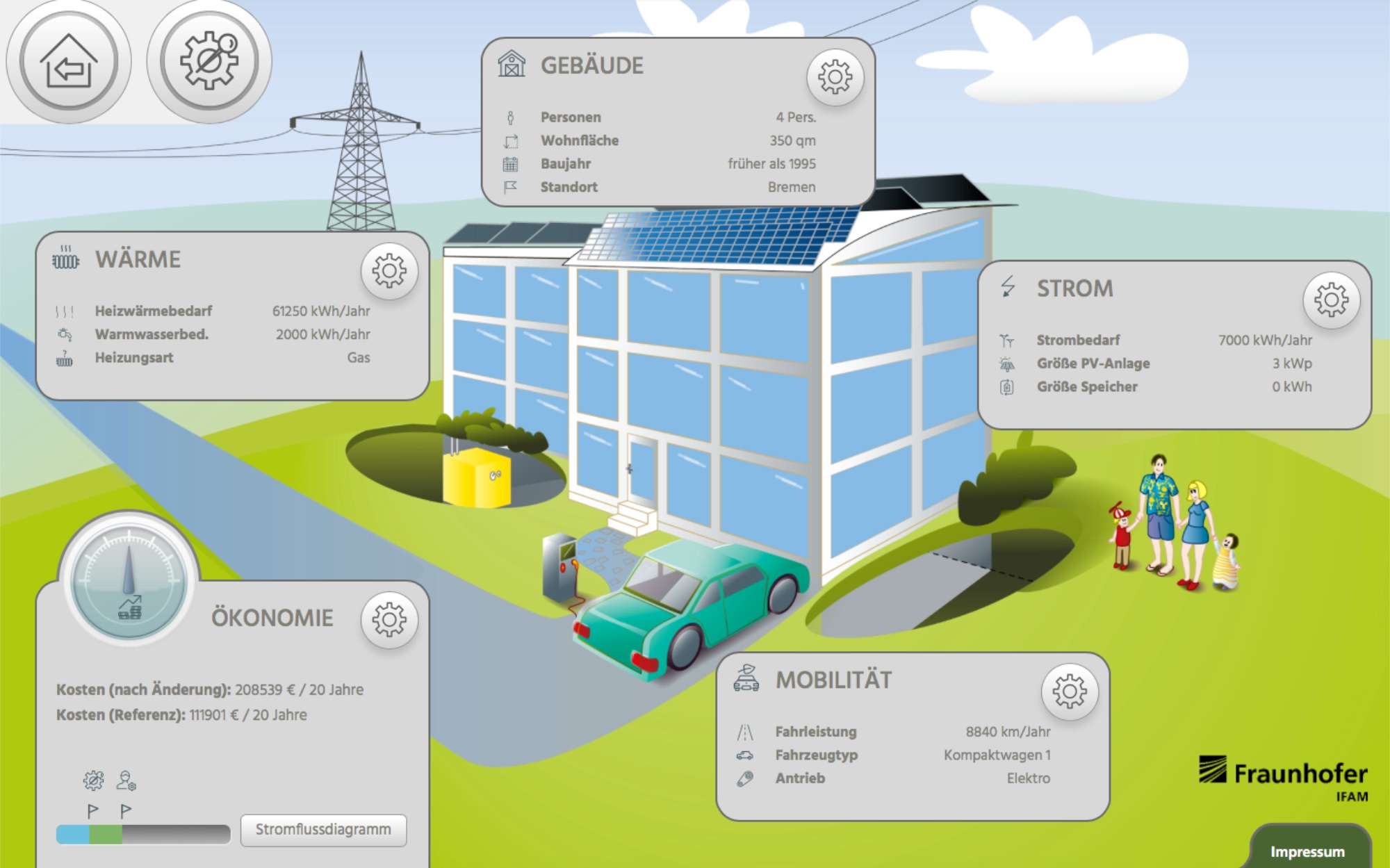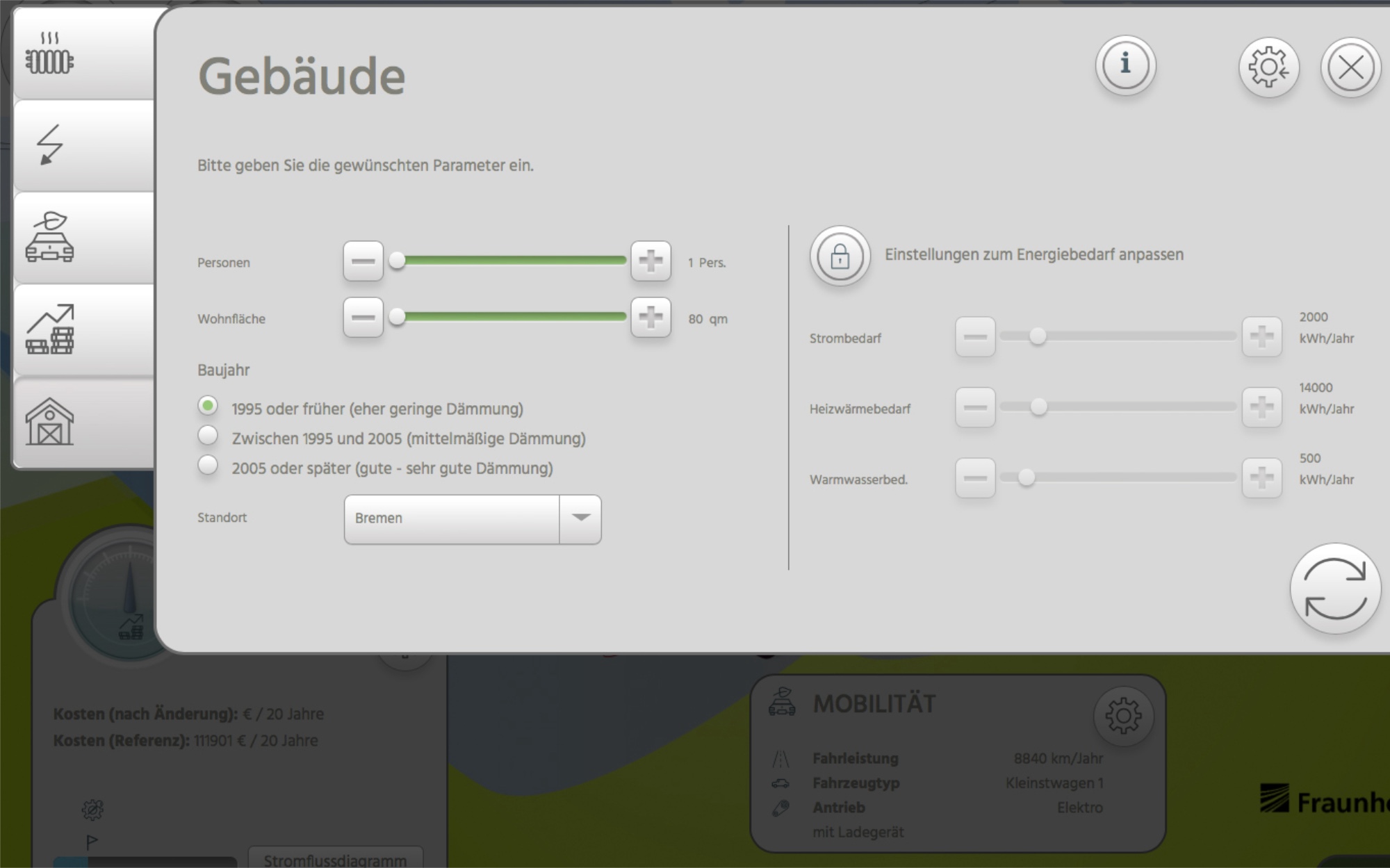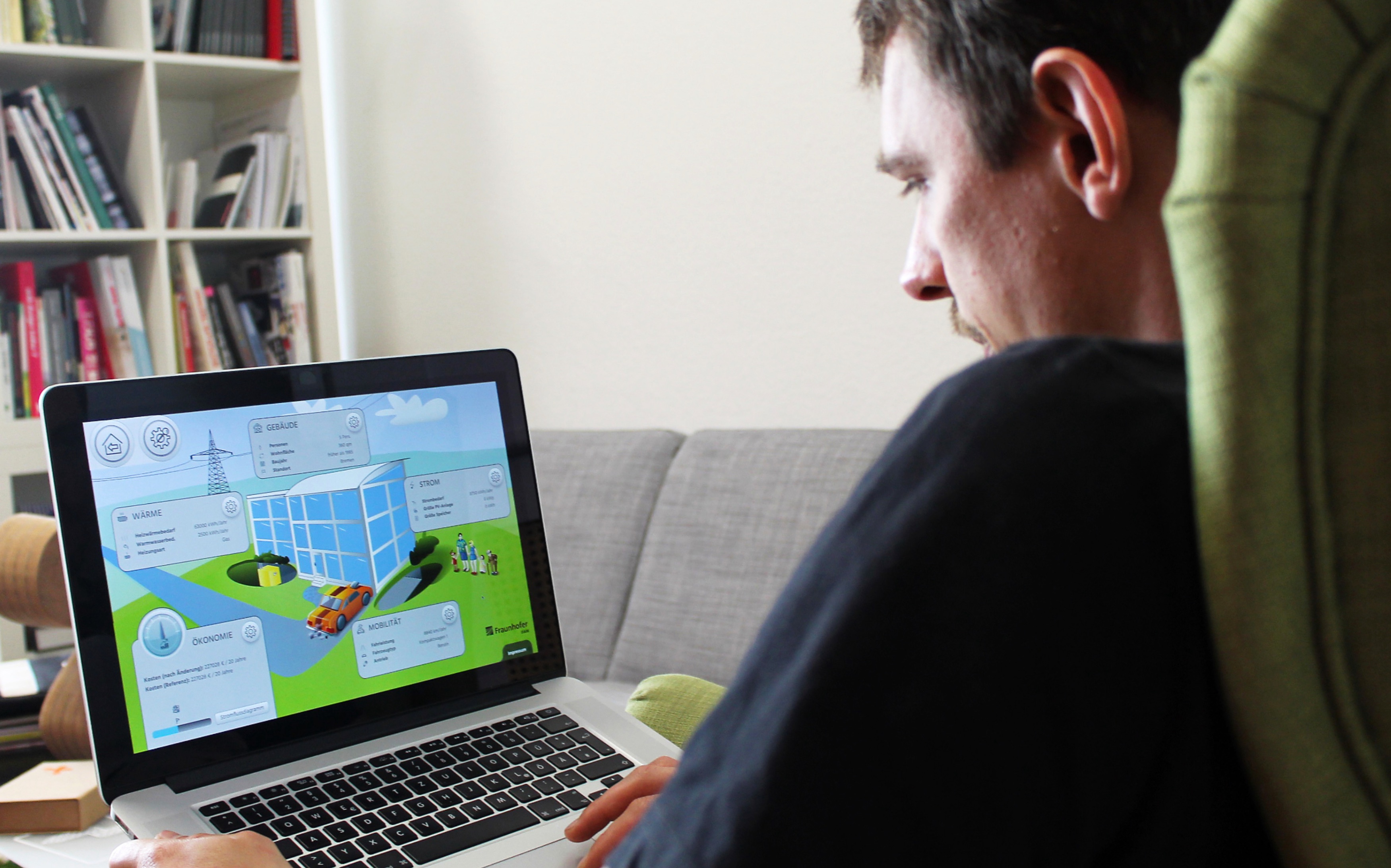Virtual Smart Home
Mobility with Solar Power
E-Learning-Software
Electromobility and Photovoltaics
We have developed an interactive training software and an online editor for the Fraunhofer Society.
For whom is it worthwhile to purchase a photovoltaic system? How can electromobility and existing PV systems be combined sensibly? What are the adjustment screws for the most economical and efficient combination of e-mobility and living? Answers to these and other questions are now clearly provided by a new training software that we have developed on behalf of the Fraunhofer Society.
Virtual Home
Calculate Costs & Benefits
Using an interactive representation of a single-family home with large-scale selectable elements, visitors can make settings for the individual components one after the other and then start the calculation.
In addition to the performance characteristics of the various components (energy generation & demand), the overall economic analysis is calculated. The investment costs are compared with the income side under various conditions (including subsidies, energy market development and inflation rate) and the amortization period is shown. Users are actively shown how the dimensioning and composition of the components in interaction lead to very different results and which constellation is most suitable for the individual usage profile. All variables can be freely changed and the various scenarios can be evaluated successively. The application is designed both as a stationary solution for use within training courses and for online use.
Economic efficiency of energy systems
Training of Mobility Experts
The discussion of the efficient use of electromobility in a systemic environment of photovoltaics, buffer storage and electric vehicles in the smart home is the focus of an IFAM training program that is aimed equally at architects, building contractors and homeowners. They should develop a basic understanding of the technologies used in the smart home and their efficient use in order to be able to integrate them better into their practice in the future.
The training participants receive an overview of the current developments in the field of integrating systemic solutions into private households, learn about the individual system components and their specific characteristics and actively engage with the economic efficiency of energy systems. To do this, they test the interaction of electromobility, photovoltaic systems and intermediate storage in the smart home in practical exercises.
Energy systems in private households
Research at IFAM
The Fraunhofer Institute for Manufacturing Technology and Advanced Materials Research IFAM researches and develops various aspects of electromobility. In addition to dealing with electric drive systems and energy storage, the researchers look at the economic efficiency of electric vehicles in everyday life and develop solutions for integrating networked energy systems into private households. Targeted training and further education of potential user groups is also one of the activities of the Fraunhofer Society.
The application is based on a comprehensive calculation program from the Fraunhofer Society that enables the targeted manipulation of parameters for the various components involved. The examination of the individual modules, the “adjustment screws” and the interaction of the building blocks is intended to illustrate how the economic consideration of the system varies under different scenarios.





